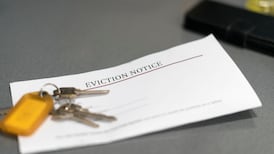Revenue has identified some 25,000 homes that could be subject to vacant homes tax, using electricity readings from ESB as one method of gathering data.
Vacant Homes Tax (VHT) is a new annual tax introduced in 2023 that seeks to encourage the return of vacant properties into the housing market.
VHT applies to properties that can be lived in and have been stayed in for less than 30 days in the previous year, with the tax applying on November 1st each year.
Minister for Finance Michael McGrath said he understands Revenue has undertaken “significant work” to identify an initial subset of residential properties which may come within the scope of the tax.
READ MORE
“A preliminary property register is being used to issue correspondence to approximately 25,000 property owners who are identified as being potentially liable for the tax,” he said.
Mr McGrath said Revenue has “extensive” data on the level of vacancy.
“Revenue can access data from other Government agencies to assist in identifying any property in use for less than 30 days in a chargeable period. Revenue has been analysing a range of data sets to build a preliminary register of properties potentially in use for 30 days or less in a chargeable period, in particular ESB Networks data to extract cases with low energy usage,” he said.
“It has refined the data to arrive at an initial data set of approximately 25,000 properties that may be in scope of the vacant homes tax. It has also analysed the local property tax returns for a number of years in respect of each property.”
Recent data from the Census identified 166,000 vacant properties, with Mr McGrath stating he has sought to reconcile the difference between this figure and the one identified by Revenue.
“It is important to point out there is a range of exemptions, for example, for homes that underwent structural works, homes being actively marketed, where the owner has passed away, where it is unoccupied due to illness or where it is a derelict or uninhabitable property,” Mr McGrath said.
“The Census data include 33,000 rental properties, about 17,500 that are classified for sale, about 23,000 vacant due to renovations and about 27,000 that are vacant as the former residents are deceased. They are embedded within the numbers declared vacant in the census.”
The information was published in response to a parliamentary question from Social Democrats TD Róisín Shortall, who said she does “not like the way it is shaping up”.
“It does not come across like there is a serious effort by Revenue or Government to force this issue and bring the houses back into use. That is the purpose of it,” she said.
“The manual concentrates overly on exemptions. How does Revenue verify applications for exemptions? Will the Minister provide information on that? It is not clear that a serious attempt is being made on this.”
Ms Shortall said the “other issue” is it is a self-assessed tax.
“If [Mr McGrath] is serious about going after vacant homes and bringing them back into use for the thousands of people who cannot access homes now, it is up to him to commence a high-profile, well-resourced public awareness programme. Will he do that?”











